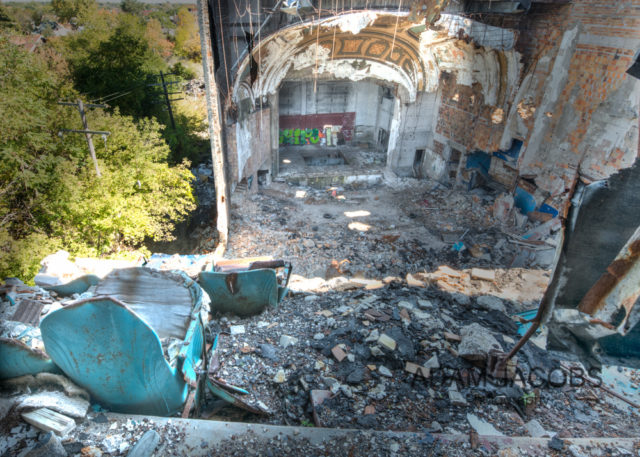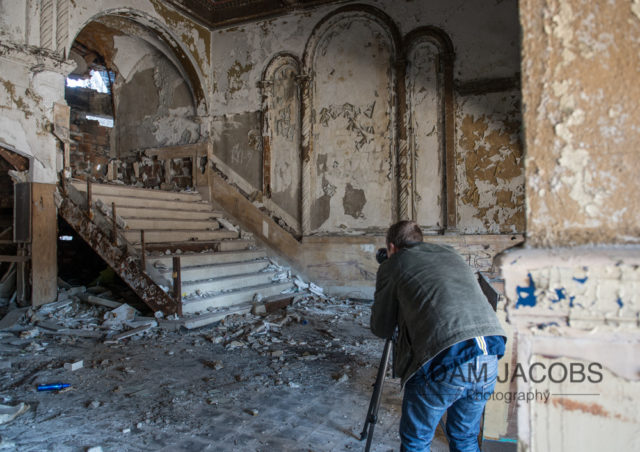On the east side of Detroit, at 8041 Harper, construction of the Eastown Theater for the Wisper & Westman theater chain began in 1926.
In the 1920s, the film industry was blossoming and going to the movies was becoming a popular pastime. As a result, several cinemas appeared in cities across America.
Wisper & Westman was one of the largest independent movie theater chains in Detroit at the time. The architectural firm VJ Waiver and Company and the architect W.J. Weier designed the Eastown Theater. Weier used a mixture of Renaissance Revival styles with a classic Baroque interior style.
The auditorium had a gilded ceiling, as well as a large balcony, and the building had a total capacity of 2,500 people. There was marble in the lobby, as well as a marble staircase leading up the mezzanine.
Also inside the building could be found offices, shops, and 35 apartments. There was also a ballroom with arched windows and an oak dance floor.
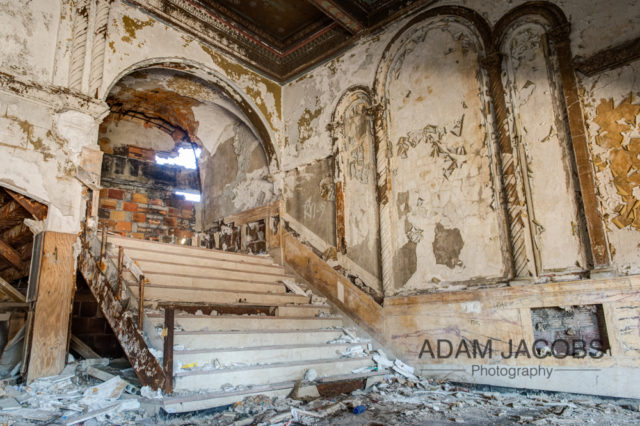
The opening of the Eastown Theater in Detroit took place on October 1, 1931, along with the screening of the film Sporting Blood starring Clark Gable. Sometime before the opening, advertisements appeared in newspapers proclaiming the opening to be “the most glorious event in the history of East Detroit” and “the dawn of a new era of entertainment.”
By the time opening night came around, the adjoining streets had been decorated by local business owners. It was hoped that the Eastown Theater would become the main cinema on the east side of the city and everyone wanted to be part of the celebrations.
Although the theater was built exclusively for movies, sometimes stage shows were held in the first years after the opening.
The owners decided to close the cinema in 1967 in order to transform it into a rock music venue. After all the seats were ripped out, the place was reopened on May 29, 1969, and the former theater became one of the most famous rock venues in the city.
The concert hall operated until December 11, 1971. During this time, the artists performing here included Elton John, The Doors, Fleetwood Mac, Chicago, Grateful Dead, Rush, Jefferson Airplane, and other famous musicians.
Alice Cooper performed there several times and is quoted as saying it had “the best audience in the world.”
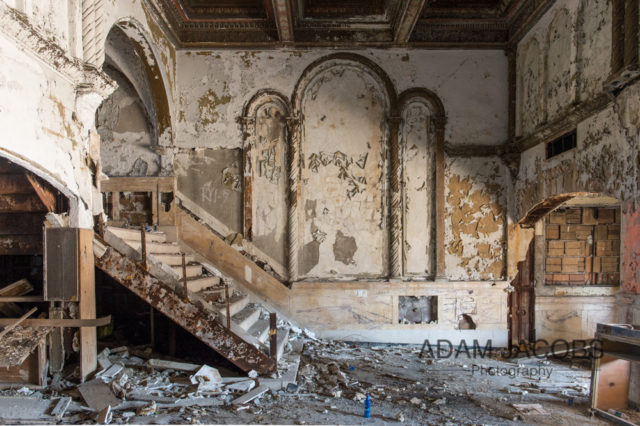
The reason for the theater’s closure was the illegal activity of drug dealers. During the show, drugs were openly bought and sold. This resulted in two fatalities.
There were also various fire department violations in the overcrowded rooms since the capacity of the hall was 1,727 people but it often attracted 3,000 spectators to an event.
The city mayor at the time, Roman Gribbs, ordered the theater’s licenses to be revoked in December 1970. However, the theater owners managed to get court injunctions allowing it to stay open pending the hearings.
In November 1971, a newspaper investigation concluded that unchecked drug dealing was being carried on at the theater. Police and officials were reluctant to intervene for fear of causing a riot.
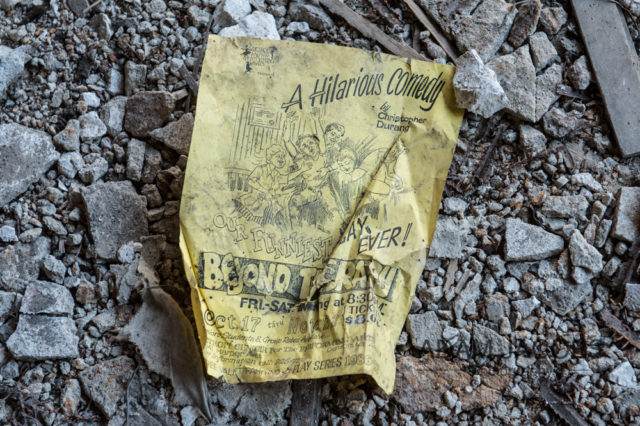
However, a month later, after angry letters from parents and residents, Gribbs ordered the revocation of Eastown’s licenses. By December 11, 1971, the rock music venue had closed.
In 1973, Mayor Gribbs approved several concerts at this location under the direction of new owners. However, in June 1973, local residents voiced their protests, so the mayor withdrew his approval for the license.
However, the theater owner proceeded with plans for a summer event because it had a letter from the mayor saying that he would grant the necessary license.
In July, a concert was held with 3,000 people, which resulted in several fights. Four people were sent to the hospital due to a drug overdose. The mayor refused to give permission for further concerts and at a later court hearing, a judge decided to close Eastown.
In 1975, Eastown changed its name to Showcase Theater and reopened as a jazz music hall. The seats that had been ripped out to make the building a rock music venue were reinstated, giving the theater a capacity of 2,000 people. However, in 1980, it became an adult movie theater and remained as such until 1984.
In 1984, the former Eastown Theater was transferred to the Performing Arts Center for staging performances and acting workshops. However, the building began to deteriorate and was in need of repairs.
The Performing Arts Center created a fundraising project to finance such renovations, but that failed and Eastown closed again in 1990.
In the late 1990s, the former theater was transferred to a church group. Some members of the congregation were housed in the apartments that were above the former theater.
The church tried to sell the building twice, in 2004 and 2009. In 2004, it was put up for sale for $2 million but in the 2009 sale, the price was halved.
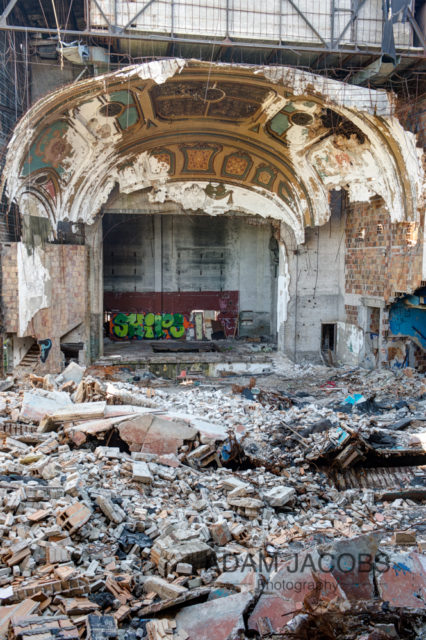
Unfortunately, no buyer for the former cinema came forward and so the building became abandoned. On August 9, 2010, a fire broke out in the residential part of the building, resulting in most of the apartments being destroyed. Consequently, half of the theater was left in ruins.
The day after the fire, a demolition notice was announced, although it would be several years before that notice was carried out.
In the meantime, an illegal scrapping crew visited the site. They ripped out the structural steel in the auditorium, resulting in the ceiling collapsing in June 2014, with an entire wall of the theater following not long after.
In November 2015, an emergency demolition order was finally put into operation. The building was razed to the ground in a week.
A huge thank you to Adam Jacobs, who is based in San Francisco, and his photography website for giving us permission to share his photographs. To see more of Adam’s Abandoned Spaces work and purchase prints, visit his website here.
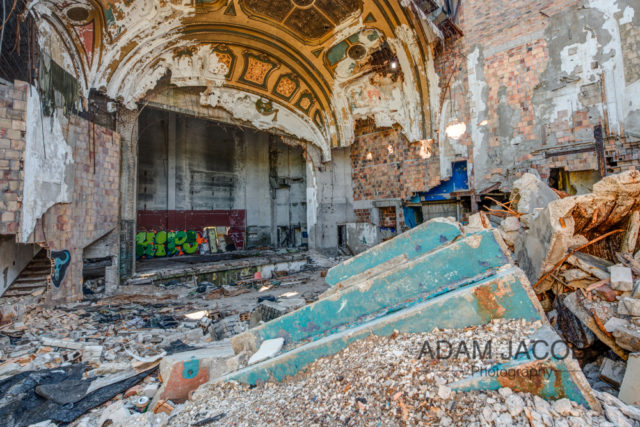
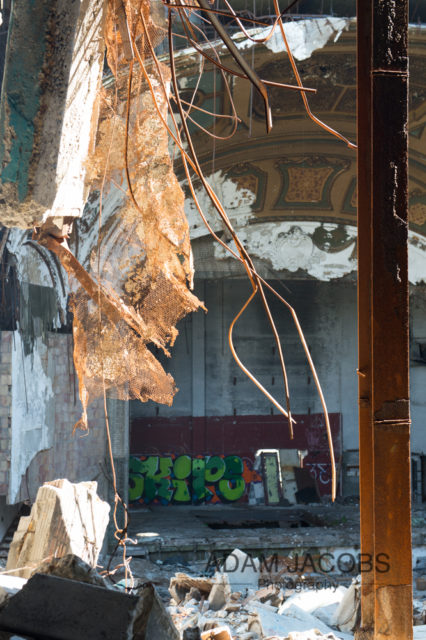
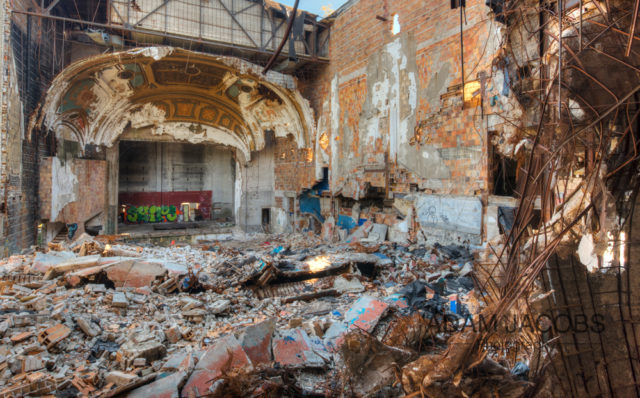
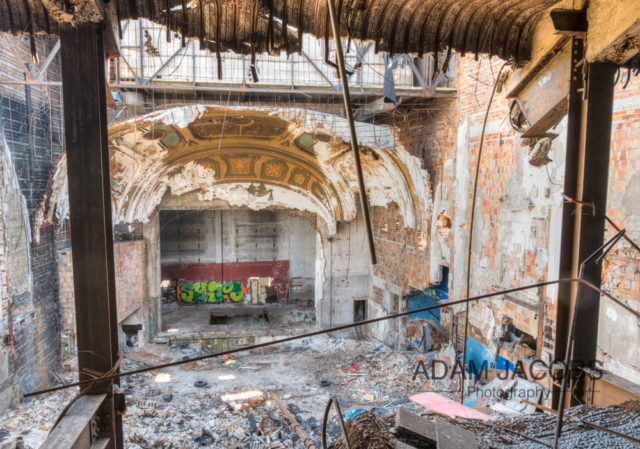
Another Article From Us: Abandoned: One of the Most Unique Homes in Saint Petersburg
